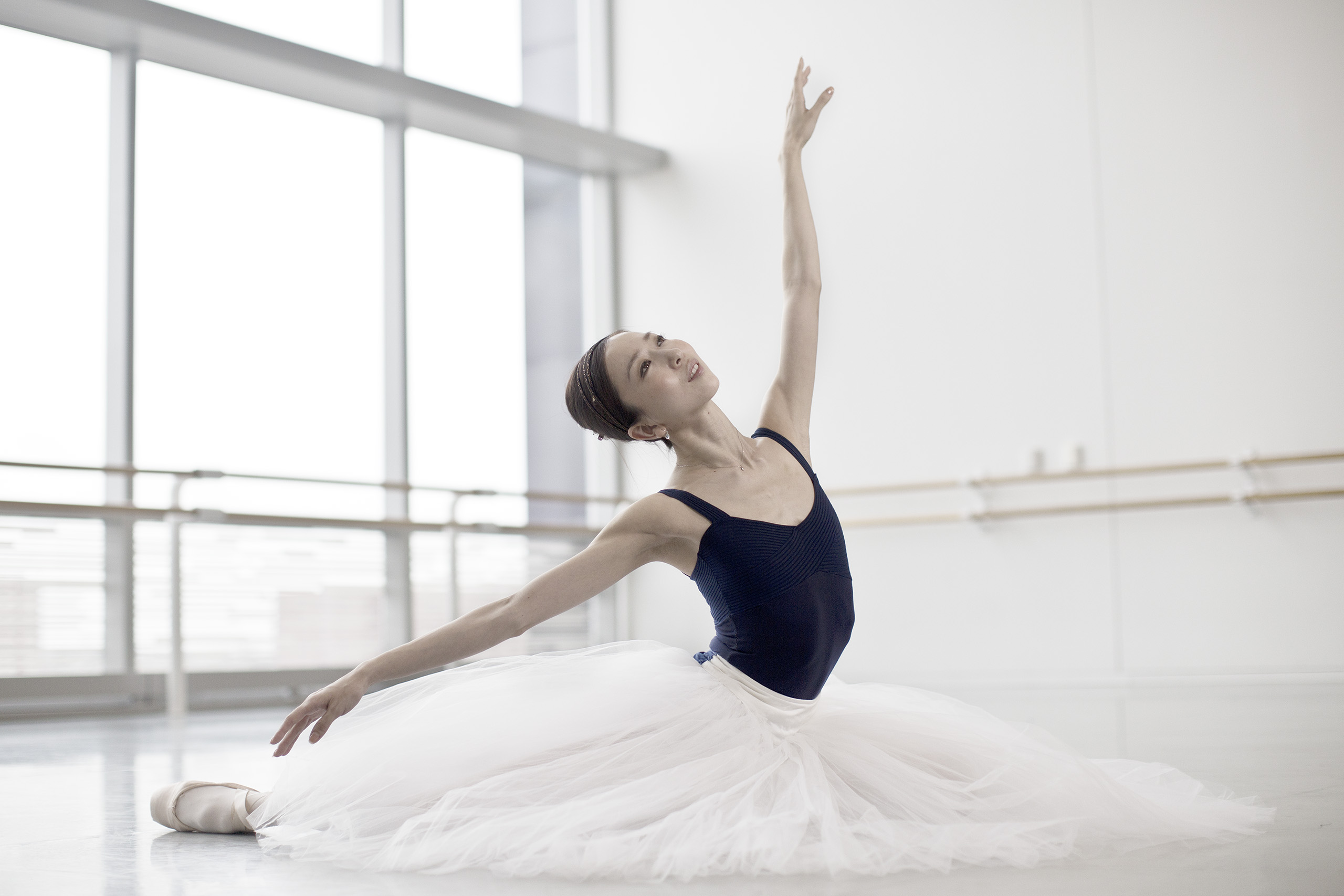In a studio full of professional ballet dancers, it’s harder than you might think to spot the ones who are principals—the highest rank in a company. But there’s something different about Yuriko Kajiya, tucked in the corner of the Houston Ballet’s company class. When she lifts her leg into an arabesque, she holds it there longer than her neighbors; she, not gravity, seems to decide when it’s time to come down. When she turns on the tops of her pointe shoes, she sails around the corner with control.
“She has that ability to take your breath away at times on stage,” says artistic director Stanton Welch, who’s teaching today’s class. “That’s what you’re looking for as a choreographer and a director: somebody who has that unexplainable thing.”
For Kajiya, 31, that magic was hard earned. As a 10-year-old girl, she moved from her hometown of Nagoya, Japan, to China in 1994 to attend the Shanghai Dance School, a government-run institution where students were handpicked from countless applicants for their perfect ballet bodies—the long legs and high arches. Which was a problem for Kajiya. “I didn’t have any of that,” she says.
Kajiya was the only foreigner in her class, and the teachers mostly ignored her. The treatment too was harsh. “In China they weigh you after a weekend,” she says, and the teachers often beat their students with a stick. Trying to fit in, “my identity was lost,” she says. “I wanted to be Chinese so badly … just because I wanted everyone to treat me the same.”
But Kajiya’s position as an outsider only motivated her to work harder. When the instructors began to teach solo variations, “that’s when I started getting addicted to practicing,” she says. “I was a real bunhead.” Kajiya would arrive an hour early to class and leave the studio only when they shut off the lights. “The teacher would say, ‘You know who’s the worst one in class? It’s Yuriko. But she works the hardest.’”
Ballet is an art of delayed rewards, and Kajiya’s started flowing in at age 15, when she competed in the international Prix de Lausanne in Switzerland. Even though she was the youngest age eligible for the competition, she won and was awarded a yearlong scholarship to Canada’s National Ballet School.

By age 17, Kajiya could go practically anywhere she wanted, and she chose the American Ballet Theatre in New York City, one of the country’s most prestigious companies. For the first 10 of her 12 years with the main company, she was the only Japanese dancer. “As a student [in Japan], I idolized all the Japanese dancers who went abroad to go to different companies,” she says. “I realized I had become one of them. I had all these little ballerina girls come up to me and say how they wanted to be like me.” Now Kajiya frequently performs in Japan and makes a point to interact with her young fans. “I want to offer what I have to the Japanese dialogue: what I have learned from America,” she says.
Even though Kajiya is one of the most recognized dancers in Japan, she still writes back to every email and fan letter. “It’s very important to me,” she says. Kajiya gained inspiration from the ballet idols she wrote to as a child. “It gave me so much hope and joy. I want to do the same thing, and that’s what I can offer.” Most of her letters come from young Japanese ballerinas, who ask Kajiya everything from why they can’t pirouette properly to why their parents won’t let them do ballet. “She’ll respond, and sometimes we’ll meet these people at a gig,” says Jared Matthews, a fellow dancer who met Kajiya at the American Ballet Theatre and who is now her fiancé. “They’ll say, ‘Two years ago, I wrote, and you wrote back to me. It changed my life.’”
In 2014, Kajiya and Matthews left the American Ballet Theatre to join the Houston Ballet, where they are now both principal dancers. She has a whole audience of new young ballerinas to inspire. “The way dancers really lead, I think, is through their work ethic,” says Welch, and Kajiya’s determination to succeed against the odds is especially motivating. “When you can see someone working and performing and being smart and growing, that is what is inspirational to young dancers.”
As the studio clears out from the morning class, Kajiya slips on a practice tutu and turns to smile at her partner waiting across the studio. Matthews and Kajiya are practicing the wedding scene from Don Quixote before they leave in a few hours for a performance tour of Japan. As the music starts, they turn away from the mirror to dance to the window, the vast open Houston sky their imaginary audience. The real one, full of lots of starstruck ballerina girls, will come tomorrow.
- The 100 Most Influential People of 2024
- Coco Gauff Is Playing for Herself Now
- Scenes From Pro-Palestinian Encampments Across U.S. Universities
- 6 Compliments That Land Every Time
- If You're Dating Right Now, You're Brave: Column
- The AI That Could Heal a Divided Internet
- Fallout Is a Brilliant Model for the Future of Video Game Adaptations
- Want Weekly Recs on What to Watch, Read, and More? Sign Up for Worth Your Time